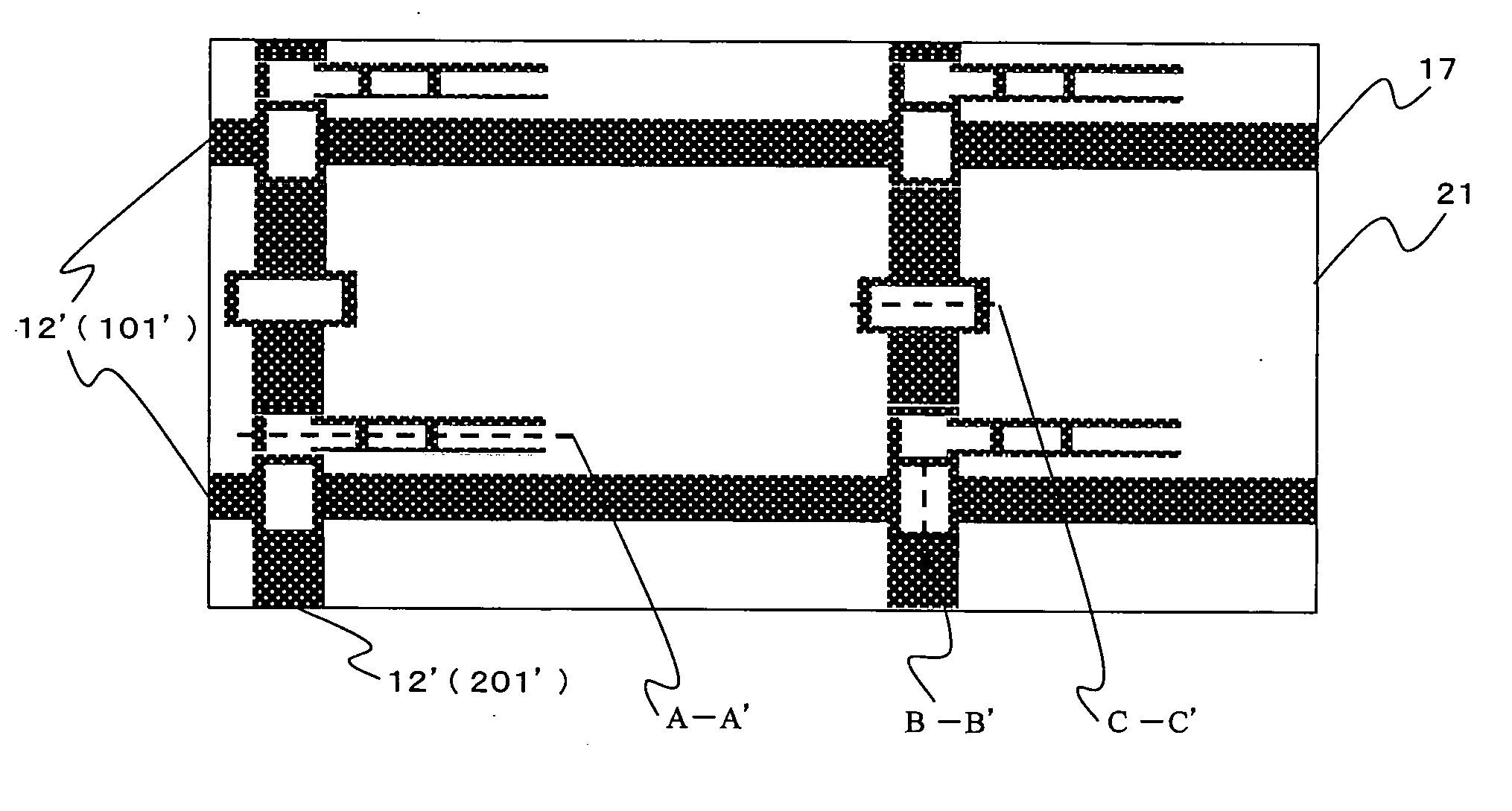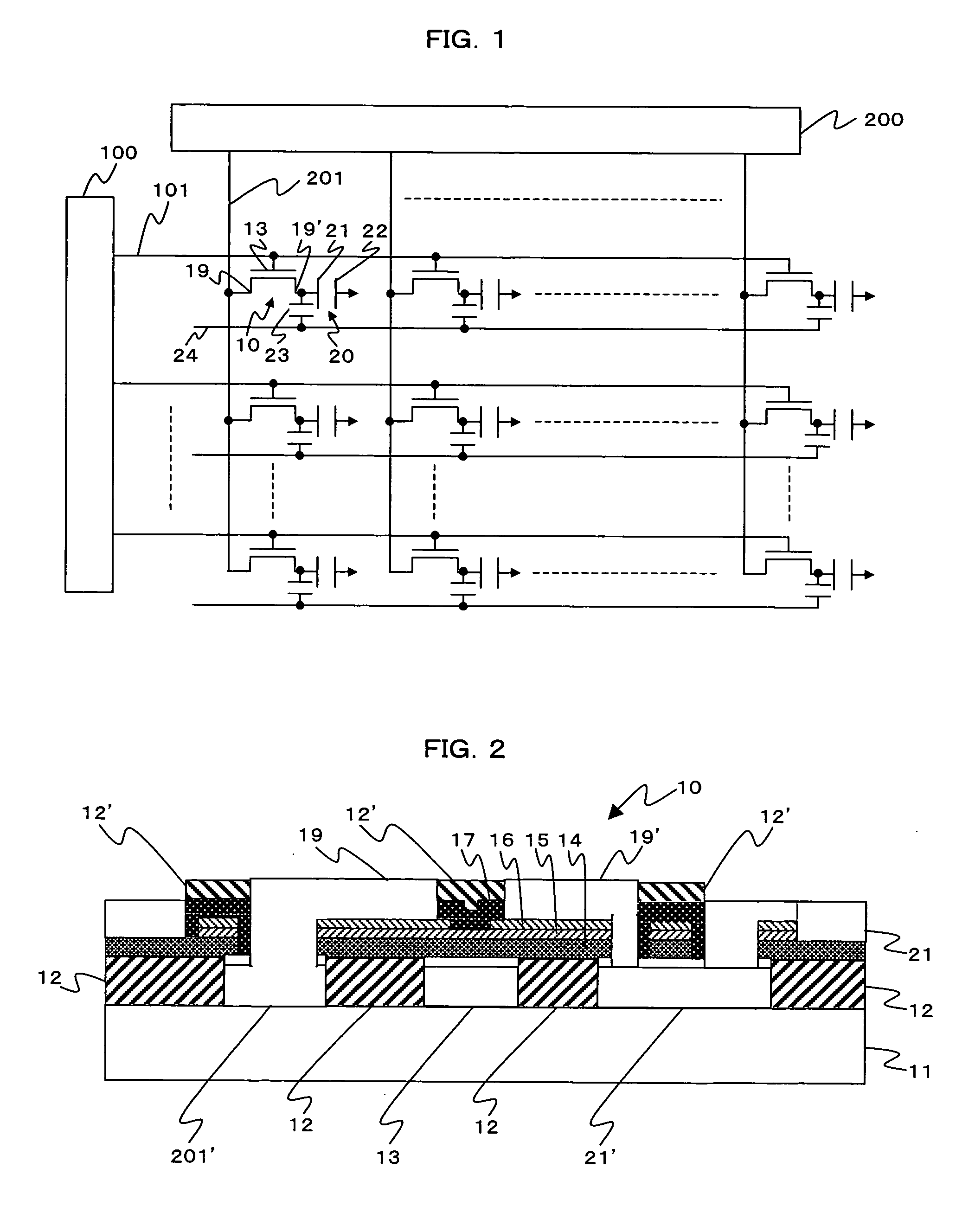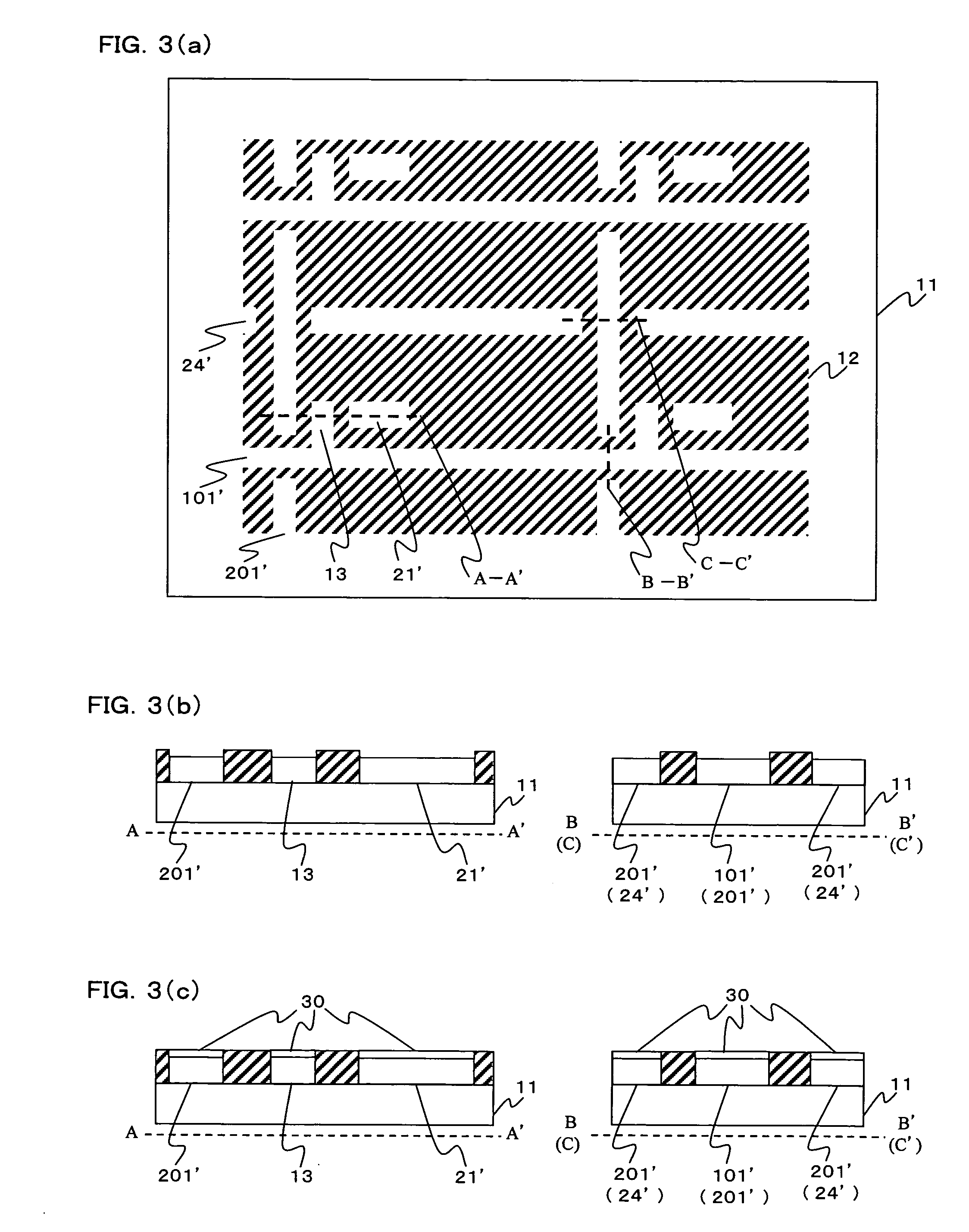Liquid crystal display device using thin-film transistor and method for manufacturing the same
- Summary
- Abstract
- Description
- Claims
- Application Information
AI Technical Summary
Benefits of technology
Problems solved by technology
Method used
Image
Examples
embodiment 1
[0036]FIG. 1 is a schematical diagram of a liquid crystal display device of active matrix type using a thin-film transistor according to the present invention. To match scan lines 101 as selected by a scan line driving circuit 100, data (voltage) is supplied to a thin-film transistor 10 from a data line driving circuit 200 via data lines 201.
[0037] The thin-film transistor 10 is provided at an intersection of the scan line 101 and the data line 201. The scan line 101 is connected to a gate electrode 13 of the thin-film transistor 10. The data line 201 is connected to a source electrode 19 of the thin-film transistor 10.
[0038] A drain electrode 19′ of the thin-film transistor 10 is connected to a pixel electrode 21 of a liquid crystal element 20. The liquid crystal element 20 is positioned between the pixel electrode 21 and a common electrode 22, and it is driven by data (voltage) supplied to the pixel electrode 21. An auxiliary capacity 23 to temporarily maintain the data (voltage...
embodiment 2
[0055]FIG. 8 is a cross-sectional view of the thin-film transistor 10 shown in FIG. 1. It is different from the cross-sectional view of the thin-film transistor 10 of FIG. 2 in the arrangement of the ohmic contact layer (n+ semiconductor layer) 16 and the protective layer 17. Description will be given below on the processes for manufacturing this thin-film transistor. The gate-source line process is the same as the process shown in FIG. 3. The next process for preparing the thin-film transistor is shown in FIG. 9.
[0056]FIG. 9 represents drawings to show processes for preparing the thin-film transistor subsequent to the gate-source line process shown in FIG. 3. As shown in FIG. 9 (a), a gate insulator 14, an a-Si semiconductor film 15 and a protective film 17 are sequentially formed. FIG. 9 (c) represents a cross-sectional view of the thin-film transistor 40 along the broken line A-A′, the line crossing portion 41 along the broken lines B-B′ and the broken line C-C′.
[0057] Next, si...
embodiment 3
[0062]FIG. 13 is a cross-sectional view of a thin-film transistor 10 shown in FIG. 1. This is different from the cross-sectional view of the thin-film transistor of FIG. 8 in that the second light transmission type photosensitive resin 12′ is not used. Description will be given below on the process for manufacturing the thin-film transistor. The gate-source line process is the same as the process shown in FIG. 3. The subsequent process for preparing the thin-film transistor is the same as the processes shown in FIG. 9, FIG. 10, and FIG. 11 (b). FIG. 14 shows the processes subsequent to the processes shown in FIG. 11 (b).
[0063] The arrangement shown in FIG. 14 is different from the arrangement of FIG. 11 (c) and FIG. 11 (d) in that the cap metal 30 is processed by etching as shown in FIG. 14 (a), and the second light transmission type photosensitive resin 12′ and the resist 110 are removed off as shown in FIG. 14 (b).
[0064]FIG. 15 represents processes for preparing the thin-film tr...
PUM
 Login to View More
Login to View More Abstract
Description
Claims
Application Information
 Login to View More
Login to View More - R&D
- Intellectual Property
- Life Sciences
- Materials
- Tech Scout
- Unparalleled Data Quality
- Higher Quality Content
- 60% Fewer Hallucinations
Browse by: Latest US Patents, China's latest patents, Technical Efficacy Thesaurus, Application Domain, Technology Topic, Popular Technical Reports.
© 2025 PatSnap. All rights reserved.Legal|Privacy policy|Modern Slavery Act Transparency Statement|Sitemap|About US| Contact US: help@patsnap.com



